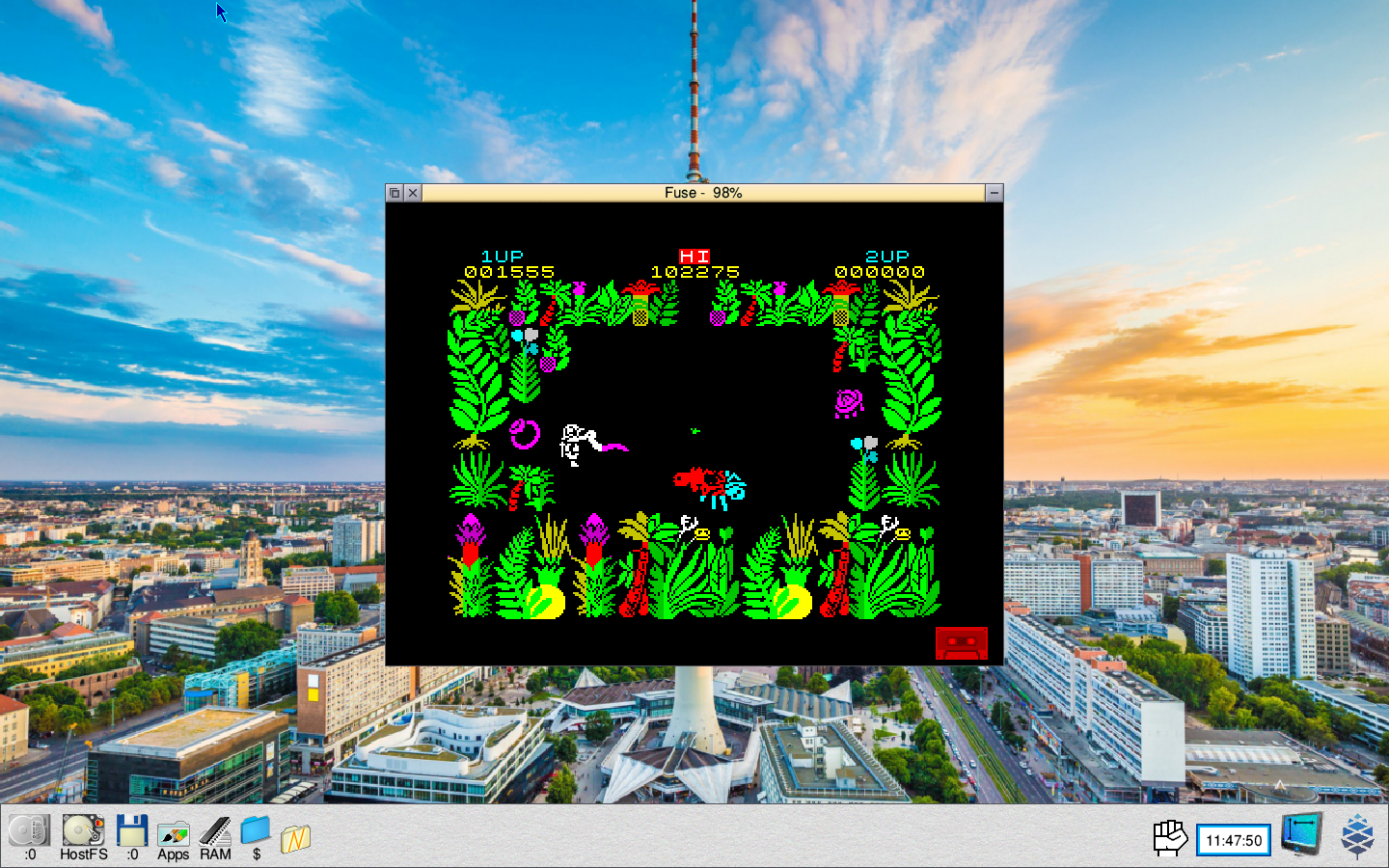
Sinclair zx spectrum emulator windows best keygen#

I'll assume that the variable has been substituted from here onĬreate a temporary mono audio file game-n.wav from game.wav with the volume set to -3 dB ( -norm=-3) with 16-bit samples ( -b 16)Ĭreate a temporary mono audio file game-ni.wav from game-n.wav with the samples inverted ( vol -1.0) Set the variable base to the value game that is, the base name of the file argument, stripped of its file extension. Assume the script has been called with an argument game.wav, a mono audio file of the game loader: What this script does - for people who might want to port it to systems without the Bash shell. Ultimately I'd like to encode these as MP3s, tag them properly, and add loading screens as cover art. # method by ‘mcleod_ideafix’ many thanks / greetz # wav2differential.sh - convert mono game tape audio to 2× stereo Here is a shell script to do (effectively) the same thing: #!/bin/bash I've confirmed that mcleod_ideafix's method is reliable for regular tape images. Don't be surprised if you need to lower the volume in order to get it loaded.įor example, in order to load this Bruce Lee example with a Samsung Onyx, I had to do it using the MIC input on the Spectrum, as the EAR input was too loud to be usable. Save this wave as PCM stereo track by choosing File -> ExportĬopy it to your digital audio player and use the stereo cable as described to play the resulting sound. The final result should be a stereo track with one channel inverted.

Then, click on the name of any of them and select "Make stereo track" Now select both tracks: press Shift and click on both tracks (the region where the properties of each track are displayed). Now we have two independent tracks, one of them with an inverted version of the sound of the other one. With that selection active, select Effect -> Invert


From the menu, select Edit -> Select -> Cursor to Track End so the whole track is selected. Press Home to bring the selection mark to the very beginning of the track. Now we have the left and right channels in different tracks, so we can manipulate each one independently.Ĭhange to the select tool (above the magnifier tool) and click the second track (the one below the other) as near as possible to the beginning of it. Now click on the wav name tab and select "Split stereo track" Use the magnifier tool inside the wave window to amgnify it to the point you can clearly see both waves, that initially will look the same. We can clone one channel to the other one to make it stereo. The generated WAV should be stereo, but if not, it doesn't matter. Here is how:įirst, load your generated WAV into Audacity. If not, you can use an editor program like Audacity to perform the inversion. If the TAP/TZX conversion program allows this inversion, use it. Then what? Just invert one of the channels so the voltage level of one channel, reffered to the other channel, will appear to be double the value of any of both channel reffered to ground (which won't be connected at all in our setup) So when you use it to load from a digital audio player, that will normally output the same level in both channels, you won't hear (or load) anything. Why do we need it to be stereo? The trick is that both channels from the 3.5'' stereo plug will make contact inside the Spectrum jack this way: If (and only if) your audio player is battery powered, and your Spectrum is the 48K or 128K toastrack model, try the following procedure, intended to boost the volume of your wave signal, as seen by the Spectrum EAR circuitry:


 0 kommentar(er)
0 kommentar(er)
